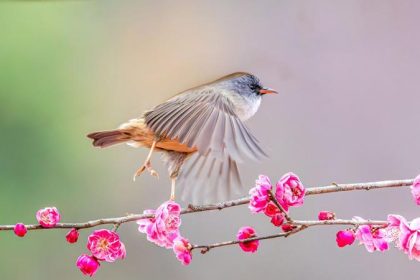Kimono has a long history in Japanese culture. This dress shows the combination of beauty, tradition and art in Japan. The Japanese kimono was originally worn by the aristocracy, but from the 16th century it became the main garment for all classes of men and women. Although the clothing style of Japanese people has changed today, kimono still retains its position as a symbol of culture and tradition in this country. In this interesting article, we have talked about the history and origin of this beautiful and traditional dress.
The meaning of the word kimono
The word kimono is made from two parts ki (着): meaning “to wear” and mono (物): meaning “thing”. In fact, the sum of this word means “something to wear”. At first, the Japanese kimono was worn only by the aristocratic families of this country, but it gradually spread among the common people and from the 16th century, it became the official and traditional dress of Japan for all classes.
The history of the Japanese kimono
Japanese kimono as the traditional dress of this country has a long and complicated history and dates back to more than a thousand years ago. This dress, which is known today as a symbol of Japanese culture and art, has undergone many changes over the centuries. In the following, we discuss the interesting story and stages of the emergence and evolution of kimono:
Japanese kimono in the Nara period (710-794 AD)
During the Nara period, Japanese culture was greatly influenced by Chinese culture, and Japanese formal clothes were very similar to Chinese clothing. Therefore, kimonos were made of silk fabrics, and their designs and cuts were inspired by imported Chinese models.
Read more: Introduction to the Japan Light Festival

Japanese kimono in the Heian period (794-1185 AD)
Kimono took a more advanced form during this period. Courtiers wore multi-layered clothes called “Jūnihitoe” which consisted of several layers of fabric with matching colors. This style gradually shaped the Japanese culture and became known as a symbol of beauty, art and elegance in this country.
Japanese kimono in the Kamakura and Muromachi periods (1185-1573 AD)
During this period, kimonos took on a simpler and more practical form known as the “straight” sewing technique. This special type of stitching made it possible to wear a single-layer kimono and formed the basis of the modern kimono design.
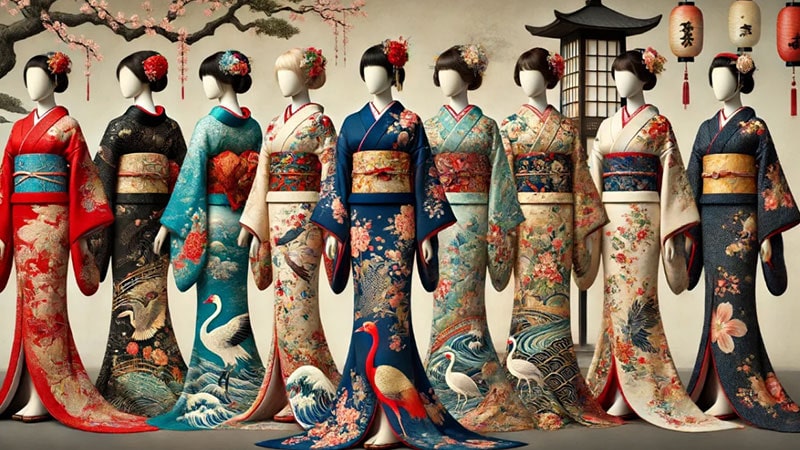
Japanese kimono in the Edo period (1603-1868).
Edo is the peak period of popularity and development of kimono! It was during this period that the use of artistic designs and various colors made the appearance of Japanese kimono more different than ever. The important thing is that each person wore a special type of kimono that represented their social class or profession. Also, the symbols designed on the kimonos showed the family identity of each person.
Japanese kimono in the modern period (from 1868 until now)
With the arrival of western culture in Japan during the Meiji period, the style of dressing of the people of this country changed and became closer to Europe. However, the kimono still retains its place as a traditional garment and a national symbol of Japan. Japanese kimonos are mainly used in special occasions such as weddings, New Year’s celebrations, etc.
read more : Getting to know the cost of living in Japan
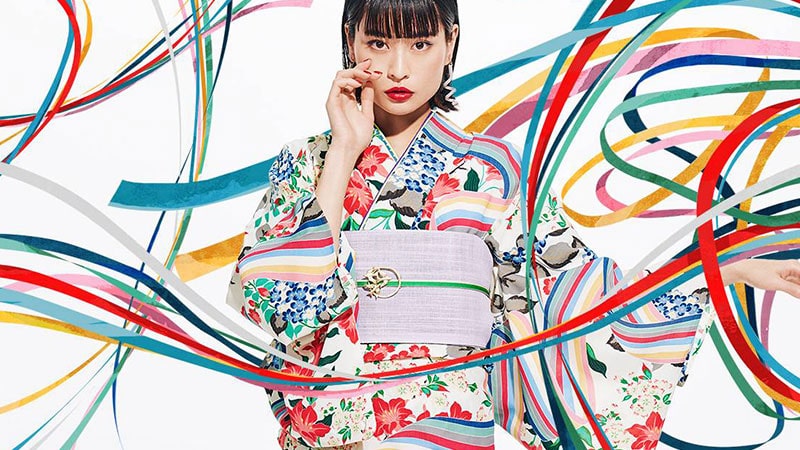
Read more: Full introduction of 30 of the most spectacular temples in Japan
Kimono’s status as a symbol of Japan
In Japan, kimono is not only a dress, but also a work of art and culture. The designs, colors and symbols on this dress all tell the beliefs, aesthetics and history of Japan. This dress still has a special place in Japanese art and culture and is known as a symbol of authenticity and tradition.
The special motifs of the Japanese kimono show the virtues or characteristics of the person who wore the clothes, or related to the season or a special occasion such as weddings and festivals.
Colors also have strong metaphorical and cultural meanings. All the colors used represent the spirit of the plants from which they are extracted. The Japanese believe that any medicinal properties are transferred to colored cloth. For example, blue is derived from indigo (ai), which is used to treat bites, so wearing blue cloth can be said to act as a repellent to snakes and insects.
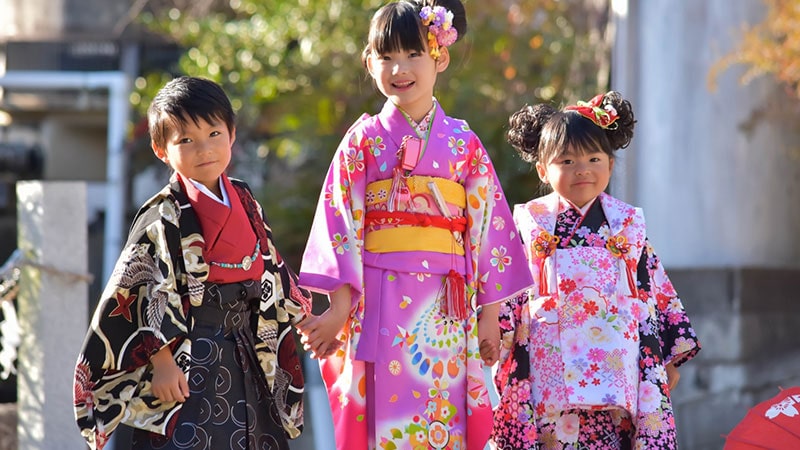
Types of kimono
Japanese kimono can be seen in different designs and types, each designed for special occasions and situations. You can see the types of this traditional dress in:
Furisode kimono (Furisode)
A brightly colored, long-sleeved kimono usually worn by unmarried girls at formal events such as weddings and coming-of-age parties.
Hmong Kimono (Homongi)
This type of Japanese kimono is designed for married and single women and is used in semi-formal events such as celebrations and parties. Kimono designs extend from the shoulders and sleeves to the bottom of the garment.
Tome Sode Kimono (Tomesode)
A formal kimono for married women whose lower part has a design and is divided into two types:
– Kuro Tume Sode: with black background and gold and silver designs for formal events.
-Iro Tome Sodeh: with non-black colors for semi-formal events.
Aero Wave Kimono (Iro Muji)
Unlike its counterparts, this kimono is monochromatic, which is often worn for tea ceremonies.
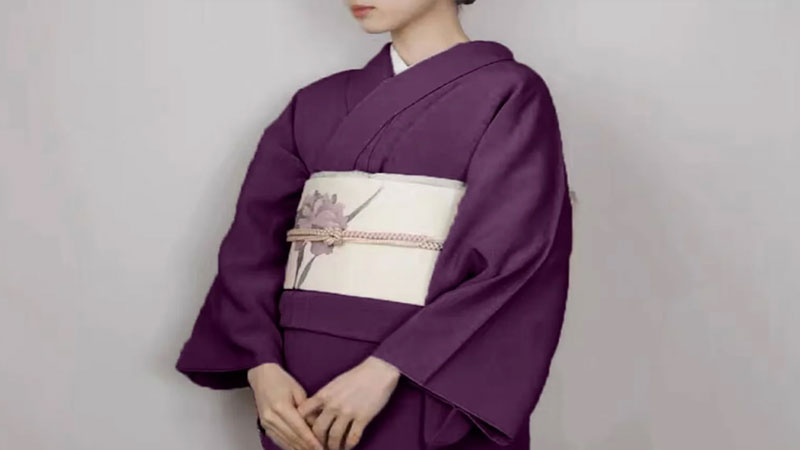
Yukata Kimono (Yukata)
A summer kimono made of linen or cotton, usually worn at festivals and informal events. This kimono is very light and comfortable.
Uchikake (Uchikake)
This kimono has beautiful and magnificent designs and is usually worn over another kimono. In fact, uchikake is a Japanese wedding dress.
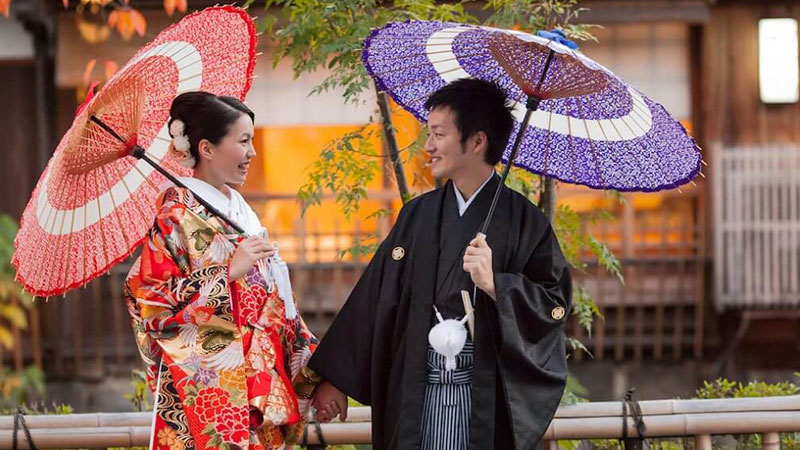
Shiromoku Kimono (Shiromuku)
A completely white kimono that symbolizes purity and purity and is used in traditional wedding ceremonies.
Haveri Kimono and Hakama (Haori & Hakama)
Haveri is a short coat worn by both men and women, and hakama is a traditional pair of pants usually worn by men with a kimono.
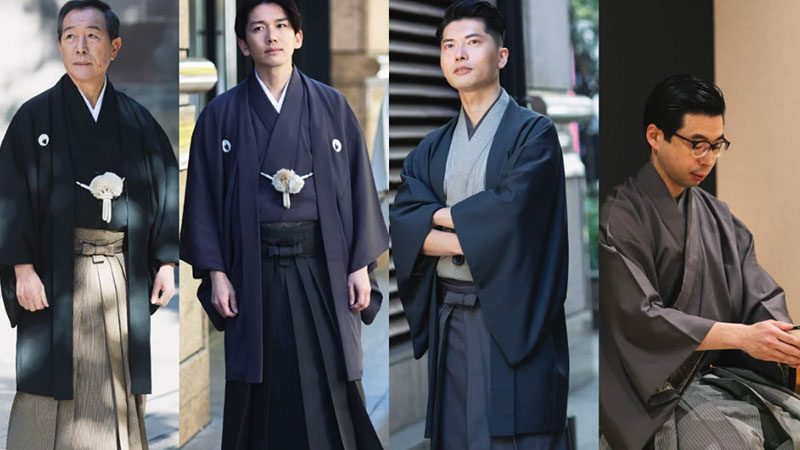
Aero Wave Kimono (Iro Muji)
Unlike its counterparts, this kimono is monochromatic, which is often worn for tea ceremonies.
Kumon Kimono (Komon)
A kimono with small designs that is used on a daily and informal basis.
Okomon Kimono (Ōkumon)
This kimono is similar to the kumon, but it is more formal and its designs are scattered on the dress.
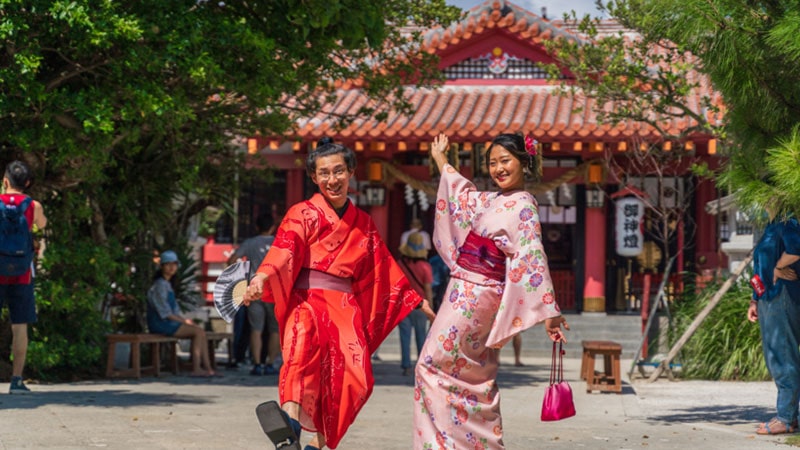
Read more: Japanese sumo wrestling festival
Japanese kimono design and symbols
Kimono is not only a garment, but also known as a work of art and a symbol of Japanese culture, which best portrays Japanese aesthetics, elegance and precision. All aspects of kimono design and structure are done with a specific purpose and have their own meaning.
Kimono design
Kimono is made of a rectangular fabric and has a collar and long and wide sleeves. The colors of this dress are chosen according to the season, ceremony or social position of the person.
Kimono symbols
Designs on kimono are often inspired by nature and include flowers, birds, waves, clouds, or animal motifs. Each role in the kimono has special meanings:
- Sakura (cherry) flowers: a symbol of fleeting beauty and nature.
- Pine tree or bamboo: a sign of longevity and endurance.
- Sea waves: a symbol of power and the flow of life.
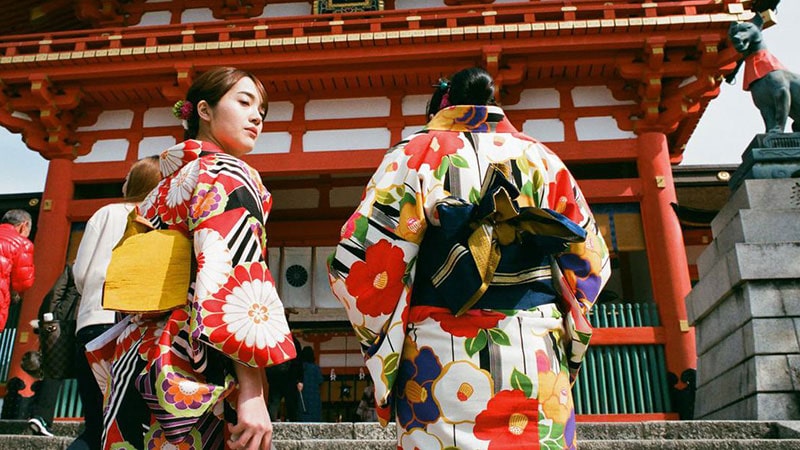
Decoration and design of Japanese kimono
- Yuzen (染め): A dyeing process that is often done by hand.
- Hand painting: Designs are painted directly on the fabric.
- Embroidery (刺繍): Embossed designs with colored threads that give a special beauty to the kimono.
- Use of gold and silver: Gold and silver threads are used to design luxurious kimonos.
Kimono belt or obi
One of the most important parts of a kimono is the obi, which is tied around the waist. The design and type of obi is very sensitive and indicates the social status and type of ceremony.
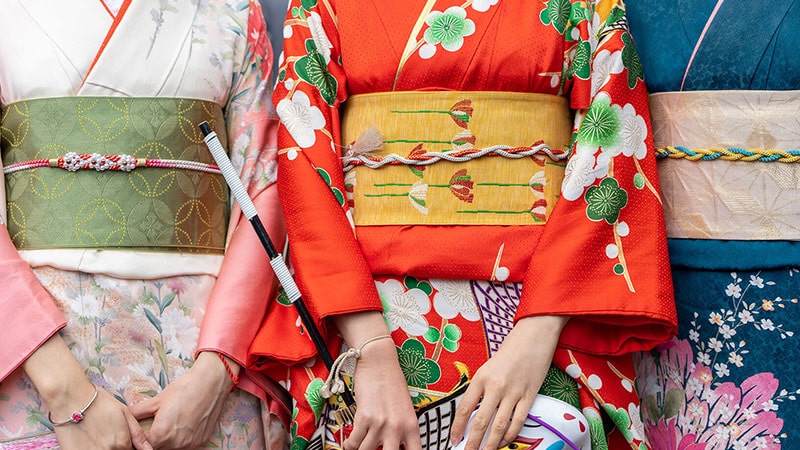
final word; Kimono in the modern world of Japan
Although the use of kimono in today’s world is much less than in the past, this traditional Japanese dress still maintains its symbolic position and inspires fashion designers around the world. It is even often displayed in exhibitions and fashion shows. In addition, Japanese people use kimonos in events such as Shinto festivals, traditional weddings, and national celebrations. Overall, the Japanese kimono still has an important place in Japanese culture, but due to social and economic changes, it has appeared in new and creative ways in the modern world.
Click to see the price and buy the Japan tour from Star Vank.
Buy a tour of Japan
Copying of the contents of Setare Vanak Airline Agency is prohibited only by mentioning the source.
RCO NEWS














